IPCC: A Sobering Report
The IPCC recently released the second part of its 6th report, and the outcome was nothing but clear: half of the world population is already suffering from the effects of climate change. Dr Katia Nicolet, our onboard scientist and expert in marine biology, shares the key takeaway of a report that would undeniably have deserved higher attention from the world.
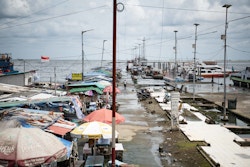
Jakarta soaking
The first thing unusual about this report is its tone. Scientists have had enough of the politics and their reports being played down. This report could not be clearer:
“The cumulative scientific evidence is unequivocal: Climate change is a threat to human well-being and planetary health. Any further delay in concerted anticipatory global action on adaptation and mitigation will miss a brief and rapidly closing window of opportunity to secure a liveable and sustainable future for all.”
Very basically, climate change is threatening life on this planet as we know it and we have a “rapidly closing window” of time to do something for our future to be “liveable”.
Another fact, stated over and over again in the report, is that we must do everything humanely possible to avoid exceeding a warming of 1.5°C above pre-industrial average (1850-1900). We are currently at a warming of 1.09°C above pre-industrial average, and on our current trajectory, we will reach 2.7°C by the end of the century.
Observed Impacts from Climate Change
Climate change is real, it is already here, it is only going to get worse and yes, human activities are to blame for it. Impacts from climate change are already being observed all over the world and some are already irreversible. To quote the report:
“Human-induced climate change, including more frequent and intense extreme events, has caused widespread adverse impacts and related losses and damages to nature and people, beyond natural climate variabilities. (…) The rise in weather and climate extremes has led to some irreversible impacts as natural and human systems are pushed beyond their ability to adapt.”
Some of these observed extreme events include hot extremes on land and in the ocean, abnormal precipitations, droughts, floods and extreme fires. These events are predicted to increase in severity and frequency with warmer climates, leading to irreversible impacts in some systems and regions. Moreover, multiple climate impacts have a tendency to occur simultaneously and interact, leading to compounded risks and vulnerabilities.
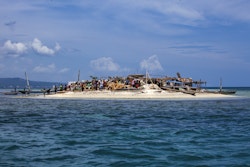
Some regions and ecosystems are more vulnerable than others, such as coral reefs, kelp forests, polar and high mountain regions, resulting in irreversible losses and species extinctions. However, impacts occur before the loss or destruction of a habitat. Globally, “approximately half of the species assessed have shifted poleward or, on land, also to higher elevation”, inducing a disruption of ecosystem services and severe impacts for human population.
The land is changing, the species are moving away, the crops are failing, and the hydrological systems are fluctuating with the loss of glaciers and the thaw of permafrost. The systems we rely on for food, clean water and even oxygen are already impacted by climate change and it is causing sever harm to people health and livelihood.
Example of interacting impacts of climate change
The rise in global temperatures and atmospheric CO2 is having three different impacts on the ocean: a) sea water is warming, b) the ocean is becoming more acidic and, c) the sea level is rising. These impacts are interacting with one-another, leading to increased negative outcomes.
In a scenario without climate change, coral reefs are growing every year at a given rate, forming a physical barrier protecting the coast from large oceanic waves and storms. The calmer waters between coral reefs and the shore allow for other ecosystems to form: seagrass beds can thrive in shallow waters and mangroves can grow along the shore. All these interconnected ecosystems result in an incredible biodiversity, providing food and shelter for tropical fish, sharks, dugongs, dolphins, crabs, shrimps and thousands of other species. This, of course, is an endless source of food for coastal populations, but also a source of economic benefits through the use of these ecosystems for leisure, tourism, fishing, diving and research.
With climate change, corals are bleaching and dying from warm sea water. The corals that survived the excess heat are having difficulties growing at their normal rate because of ocean acidification (corals need a set pH to form their skeleton and grow). The reef, then, is growing more slowly, while the sea level keeps rising, adding more water on top of the reef. As a result, the reef can no longer act as a barrier against oceanic waves and storms, letting large waves into seagrass bed areas and mangrove ecosystems.
These plants, however, cannot resist continuous wave action and their numbers decrease. With sea level rise, high tides and storms will create floods along the coasts and erode away the land. No more reefs, no more seagrass beds, no more mangroves, no more sandy beaches. And with it, the extinction of hundreds of species and the rarefication of thousands more. The species left and the pockets of reefs and mangroves that remain will not provide the same ecosystem services to local populations resulting in a loss of food sources and economic incomes.
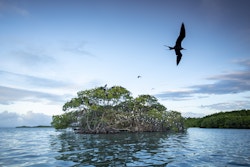
Energy Observer at Fajou island
Exposure to Climate Change and Lack of Action
“Approximately 3.3 to 3.6 billion people live in contexts that are highly vulnerable to climate change. A high proportion of species is vulnerable to climate change. Human and ecosystem vulnerability are interdependent. Current unsustainable development patterns are increasing exposure of ecosystems and people to climate hazards”.
This is a lot to unpack, but very simply, up to 3.6 billion people are already suffering from the impacts of climate change, along with a large proportion of non-human species. Moreover, people and nature are interdependent, and further harm to nature will cause further harm to people. The longer we keep on warming the climate and destroying habitats, the more humans and the planet will suffer.
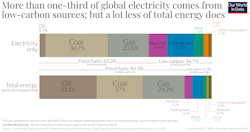
It seems only logical. It feels like we have known this, deep down, for years now. But humanity as a whole is failing to take action. Globally, 84.3% of our energy comes from fossil fuels (Our World in Data 2020), and current short-term predictions are even worse: demand for all fossil fuels is set to grow significantly in 2021, according to International Energy Agency (IEA).
Coal demand alone is projects to increase by 60% more than all renewables combined, which will release an extra 1 500 million tons of CO2e in the atmosphere (rise in emissions of 5%; Global Energy Review 2021, IEA). And all the pledges taken during the COP26 will cover less 20% of the gap in emissions reductions that needs to be closed by 2030 to keep a 1.5˚C path within reach (World Energy Outlook 2021, IEA)
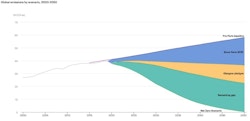
World Energy Outlook 2021
Fossil fuels act as a drug for humanity. We are highly dependant on it, we know how bad it is, but we still can't get rid of it. We put short-term gain before long term health and survival, even when it’s economically illogical to do so. Thus Iin most countries around the world, solar is now becoming cheaper than coal (Our World in Data).
Another Narrative
Maybe what we lack is not knowledge, or more apocalyptic predictions about the number of species going extinct before 2050. Maybe what we need is hope.
Hope that another future is possible. A vision towards which to work.
And scientists on this IPCC report have laid the basis for such a future. Actions and steps towards effective adaptation options need to check a few boxes. Solutions have to:
- Be multi-sectorial and address social inequities and variations in climate risks (low income, marginalised and vulnerable communities experience greater climate impacts and this need to be addressed in future solutions).
- Enhance natural ecosystems services (ex: restoring wetlands and rivers to reduce flood risks)
- Enhance food availability and reduce risk for food systems while increasing their sustainability (ex: agroforestry, community-based adaptation, farm and landscape diversification, urban agriculture)
- Include conservation, protection and restoration measures of natural habitat.
- Reduce non-climatic stressors (ex: plastic pollution, chemical pollution, habitat degradation, land clearing etc.)

A rapidly closing window
In the report, scientists state that “maintaining the resilience of biodiversity and ecosystem services at a global scale depends on effective and equitable conservation of approximately 30% to 50% of Earth’s land, freshwater and ocean areas, including currently near-natural ecosystems”.
It is proven that large protected areas increase the resilience of species and ecosystem processes. By leaving 30 to 50% of the planet to nature, we will allow nature to maintain the basic services that humans need to survive (clean water, clean air, stable food source).
Nature doesn’t need people, people need nature.
This fight is not about saving the planet, it is about saving liveable conditions for humans on this planet.
And as the report state, it is possible. But we have a “rapidly closing window” of time to do so.